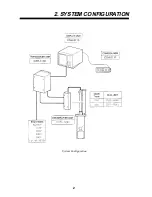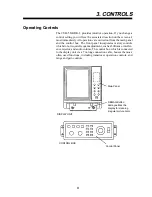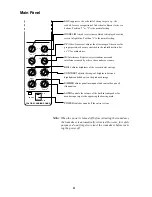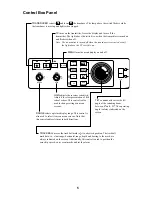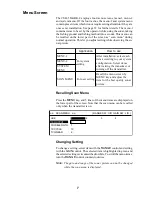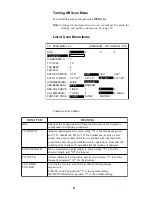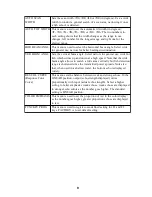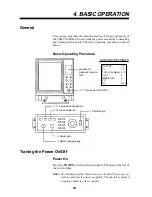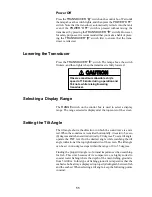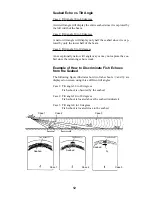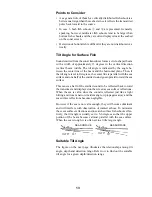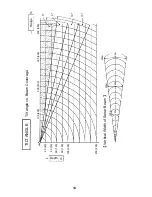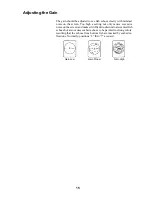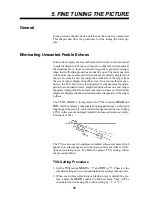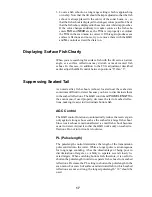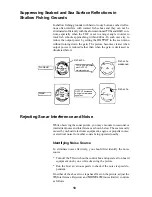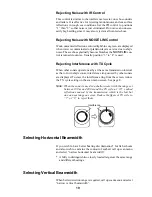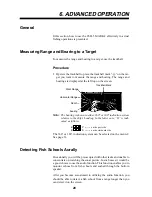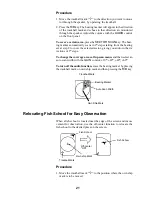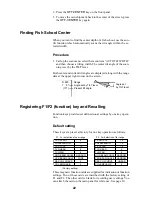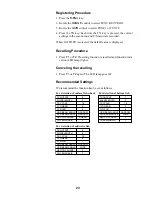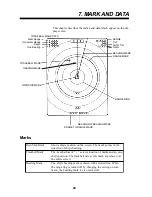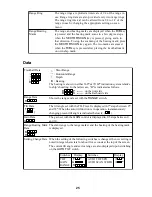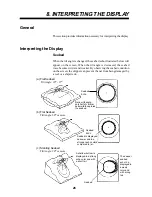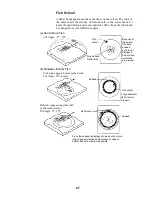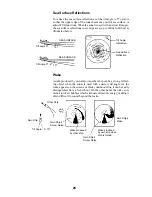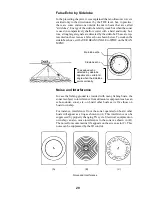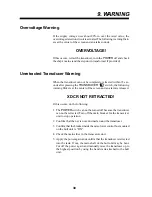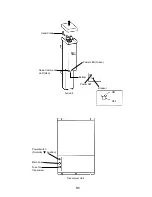
16
5. FINE TUNING THE PICTURE
General
In the previous chapter basic operation of the sonar was presented.
This chapter describes the procedures for fine tuning the sonar pic-
ture.
Eliminating Unwanted Feeble Echoes
Echoes from targets such as seabed and fish return to the transducer
in order of distance to them, and when we compare their intensities at
the transducer face, those from nearer targets are generally stronger
when their reflecting properties are nearly equal. The sonar operator
will be quite inconvenienced if these echoes are directly displayed on
the screen, since he can not judge the actual size of the target from
the size of echoes displayed on the screen. To overcome this inconve-
nience, the TVG function is incorporated. It compensates for propa-
gation loss of sound in water; amplification of echoes on short rang is
suppressed and gradually increased as range increases so that similar
targets are displayed in the similar intensities irrespective of the ranges
to them.
The CSH-5 MARK-2 incorporates two
TVG
function,
NEAR
and
FAR
, and they mainly compensate for propagation loss on short and
long ranges respectively, centered at the ranges shown below. Setting
a TVG in the scan menu larger (smaller) increases (decreases) ampli-
fication of echoes.
NEAR
FAR
400m
The TVG is also used to suppress unwanted echoes and noise which
appear in a certain range area on the screen such as sea surface reflec-
tions and cruising noise. To obtain the proper TVG setting, follow
the procedure below.
TVG Setting Procedure
1. Set the
TVG
menus
NEAR
to “5” and
FAR
to “5”. These are the
standard setting and you can maintain these settings in most cases.
2. When sea surface reflections or plankton layers disturb the pic-
ture, adjust the
NEAR
control to eliminate them. They will be
eliminated by decreasing the control setting by “1” or “2”.

